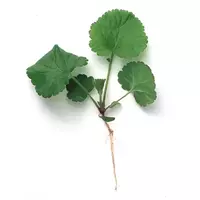Perennial gravilate

Perennial gravilate or Géum belongs to the Pink family of plants and grows on all continents of the planet Earth, with the exception of Antarctica. Currently, scientists know about 50 species of the plant perennial gravilate. The perennial gravilate acquired its original Russian-language name thanks to medieval reference books of medicinal herbs and plants, which date back to the first half of the 16th century.
During the Middle Ages, pharmacists called the plant nothing more than a clove root. This is primarily due to the unique taste and, in addition, the aromatic properties of gravilate. It is worth noting that perennial gravilate refers to the so-called meadow plants. However, some species of gravilate grow on forest edges.
In its appearance and biological structure, the gravilate is a perennial plant, with straight-growing stems, as well as a basal rosette and yellow or pink-colored inflorescences. People have long used gravilate rhizomes for culinary purposes. The rhizomes of the plant are collected in autumn, as a rule, in the second year after the landing of gravilate in the soil.
Gravilate root is thoroughly cleaned from contaminants and then dried in special well-ventilated rooms. It is worth noting that not only the taste, but also the useful properties of gravilate depend on the correctness of drying the rhizome of the plant. During the drying process, the roots of the gravilate acquire a subtle and at the same time fragrant aroma that resembles cloves.
As a rule, the mass of the rhizome of one plant is perennial gravilate up to 80 grams. In order for the gravilate rhizomes not to lose their unique taste, consumer and useful properties, the plant is stored in glass jars. It is noteworthy that with long-term storage, the aromatic properties of gravilate become much less pronounced.
In addition to the rhizome, leaves are used in writing, as well as young shoots of the plant, which contain a large amount of ascorbic acid. Usually, gravilate leaves are used to make salads. True, professional culinary experts pay attention to the fact that gravilate leaves can have a astringent taste.
Gravilate root is used in brewing, as well as in confectionery, where the plant often replaces cinnamon or cloves. The leaves and root of gravilate combine perfectly with vegetable dishes. In the Caucasian national culinary tradition, gravilate is considered a must-have ingredient in some sauces. Dried leaves, as well as gravilate root, are part of spice mixtures.
Composition of Gravilate
It is worth noting that due to its chemical composition, gravilate has found widespread use not only in cooking, but also in medicine. The natural compounds included in the gravilate make it possible to use the plant as a tonic, quenching, anti-inflammatory and antibacterial agent. In addition, regular consumption of gravilate helps in the treatment and prevention of diseases of the kidneys, respiratory tract, gastrointestinal tract, as well as liver.
long-term gravilate 0.1 kCal
Energy value of perennial gravilate (Ratio of proteins, fats, carbohydrates - ju):
Proteins: 0 g (~ 0 kCal)
Fats: 0 g (~ 0 kCal)
Carbohydrates: 0 g (~ 0 kCal)
Energy ratio (b | y): 0% | 0% | 0%
 Español
Español Français
Français Português
Português Русский
Русский 简体中文
简体中文 繁體中文
繁體中文 日本語
日本語 한국어
한국어 العربية
العربية Türkçe
Türkçe Қазақ
Қазақ Deutsch
Deutsch Italiano
Italiano Українська
Українська
